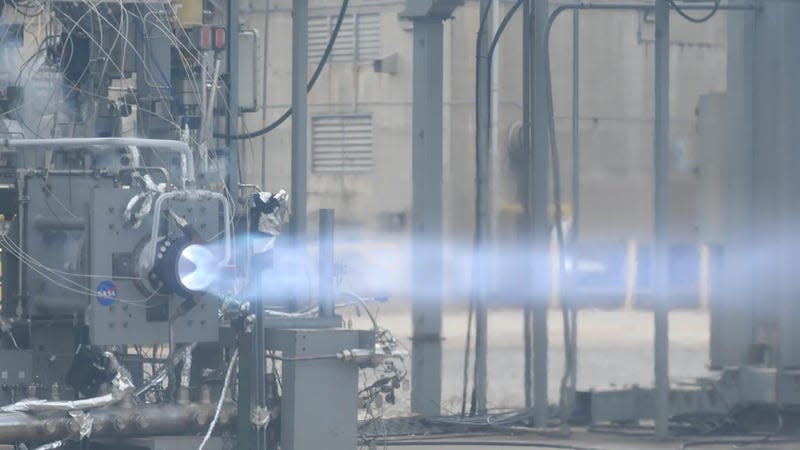NASA's Detonation Engine Revs Up for 4 Minutes in Breakthrough Test

The Rotating Detonation Rocket Engine combustor during a 251-second hot fire test in fall 2023.
NASA just put its new propulsion system to the test, powering a 3D-printed rotating detonation rocket engine for a sustained burn that lasted three times as long as the first test.
The Rotating Detonation Rocket Engine, or RDRE, produced more than 5,800 pounds of thrust for a total of 251 seconds (a little longer than four minutes) during a recent test at NASA’s Marshall Space Flight Center in Huntsville, Alabama, the space agency announced this week.
Read more
This Is How The Golden Ray Car Carrier Flipped On Its Side And Destroyed 4,067 Hyundais
Six Years Ago, The Most Stylish RPG Ever Revived A Dying Genre
RDRE was tested for the first time in 2022, producing more than 4,000 pounds of thrust for nearly a minute. The latest test was designed to “better understand how to scale the combustor to different thrust classes, supporting engine systems of all types and maximizing the variety of missions it could serve, from landers to upper stage engines to supersonic retropropulsion, a deceleration technique that could land larger payloads – or even humans – on the surface of Mars,” NASA wrote.
NASA engineers are currently working to figure out how to scale the technology for higher performance, hoping to develop a fully reusable 10,000-pound (4,500-kilogram) RDRE.
“The RDRE enables a huge leap in design efficiency,” Teasley said. “It demonstrates we are closer to making lightweight propulsion systems that will allow us to send more mass and payload further into deep space, a critical component to NASA’s Moon to Mars vision.”
For more spaceflight in your life, follow us on X (formerly Twitter) and bookmark Gizmodo’s dedicated Spaceflight page.
More from Gizmodo
Sign up for Gizmodo's Newsletter. For the latest news, Facebook, Twitter and Instagram.

